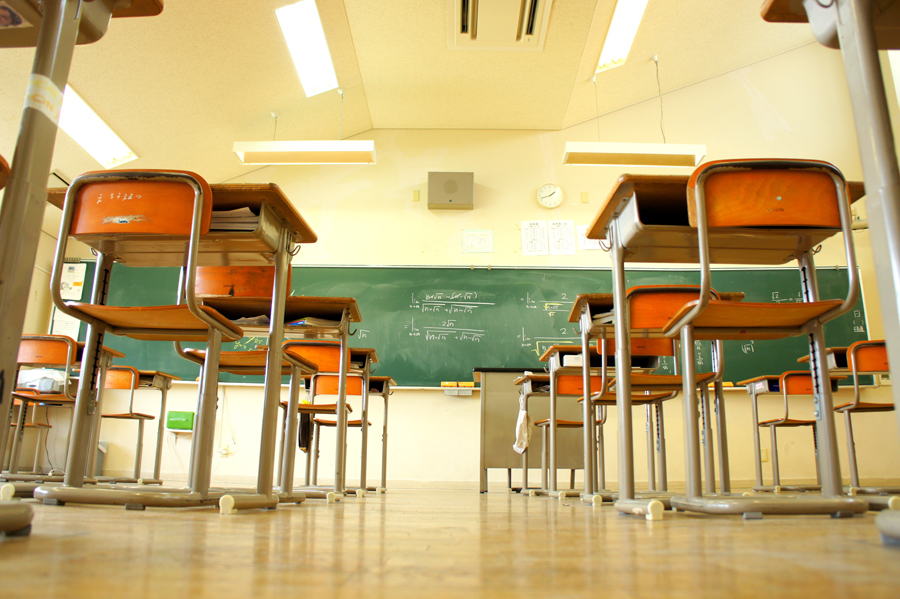
File photo.
I am a proud alumni of the Long Beach Unified School District (LBUSD) and I am excited about the change that is coming. Two weeks ago, Children’s Defense Fund-California and Public Counsel released a report documenting school climate practices and policies in our district titled Untold Stories Behind One of America’s Best Urban School Districts. As a member of the community working with current LBUSD students, I believe it is about time we heard the perspectives of those most impacted by the district’s policies, or lack thereof.
The truth is LBUSD does need to catch up with research and with a national movement to end the exclusionary and racially disparate school discipline practices that have persisted since I was a student at Poly PAAL. Then and now, I have dreamt of schools that don’t track students based on ability and behavior, and give us all the academic and social-emotional supports we need. This dream is also filled with dignity and love for students—especially black students.
Over the last two weeks, I’ve read comments in news articles from district leaders that display hesitancy, defensiveness, and fear of change. District officials are investing more time and energy in invalidating the data than in having a public dialogue about the school climate issues students of color are experiencing. Denial can be hard to overcome, but I am not surprised. In my experience organizing with students for social justice in LBUSD, the district is first and foremost motivated by its reputation as America’s Best Urban School District. In this case, that comes at the cost of being motivated by civil rights.
Despite these challenges, I do find inspiration in our community as people discuss this report. I have heard at least one district leader so far—Megan Kerr—and many community leaders show openness and eagerness for LBUSD to embrace a school climate paradigm that is categorically positive and unapologetically racially just.
I am also inspired by Jerlene Tatum, an LBUSD parent of black children, who courageously took the first chance she got to address the school board publicly about the report. On Facebook, she shared her experience at the meeting where one district employee dismissed the report’s data accuracy. “The funny thing, those that are saying the data in the report [is] inaccurate support common core math and common core principles. My children are being taught that there is more than one way to derive an answer from a problem,” Jerlene wrote.
I cannot agree with her more! In my education, I have learned that there are many ways to frame the data and story. The district’s suspension rates tells us how many students were suspended at least once. That’s a good start. In fact I have referred to that data too. Then this report took the analysis to the next level to examine rates of suspension per 100 students. This method is used by many other researchers and policy analysts who help school districts develop positive school discipline practices that are effective, fair, and just to the entire school community.
So what is a suspension rate per 100 students? Basically, students of color are not only more likely to be suspended at least once, they are also more likely to be repeatedly suspended. The frequency of suspension is what the rate per 100 students captures that the percent or rate of students ever suspended misses. That is the difference between the district’s data and the report’s analysis. Why does it matter? The more times a student is suspended, the more learning time she or he loses.
When the report shows that LBUSD’s black students received 27 suspensions per 100 black students enrolled, that does NOT mean that 27 percent of black students were suspended. That means (as the report states) that every 100 black students in LBUSD represent 27 suspensions. Meanwhile, every 100 White students represent 2 suspensions. Therefore, in terms of frequency, black students are 14 times more likely to receive a suspension than White students.
The report’s analysis is based on a rate per 100 students because it strives to capture the measurement that most accurately describes the burden of exclusionary discipline on students.
What will our LBUSD leaders achieve by dismissing the data and ignoring the problems?
There are so many other important findings and recommendations in this report. I am very excited as we finally acknowledge the experience of students—black students in particular—and move onto the solutions that are going to make, and would have made my own, school life better.
Kenyon Davis is an alumnus of Long Beach Polytechnic High School in the Long Beach Unified School District and member of the Every Student Matters campaign.

